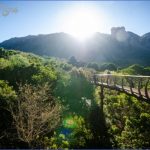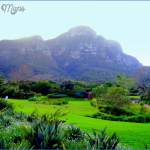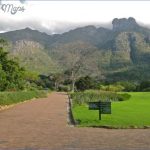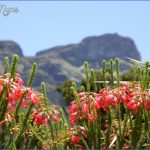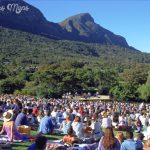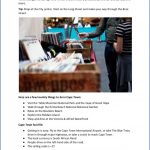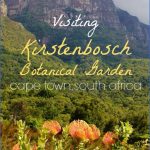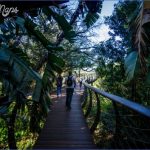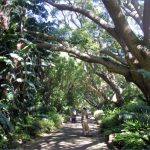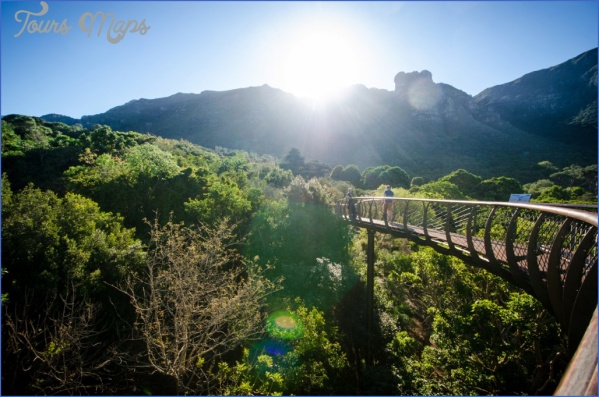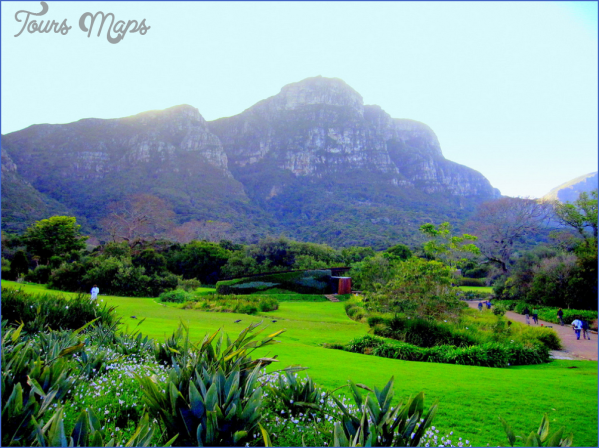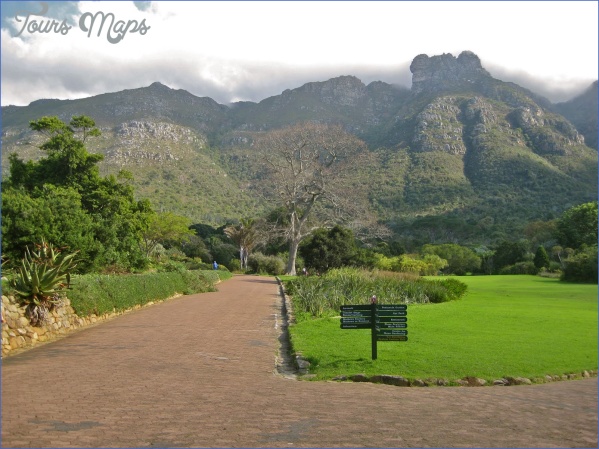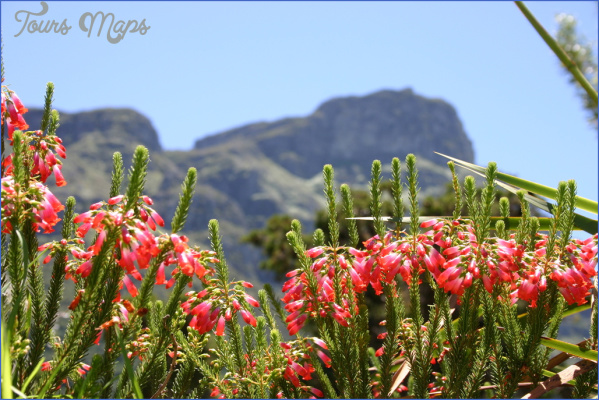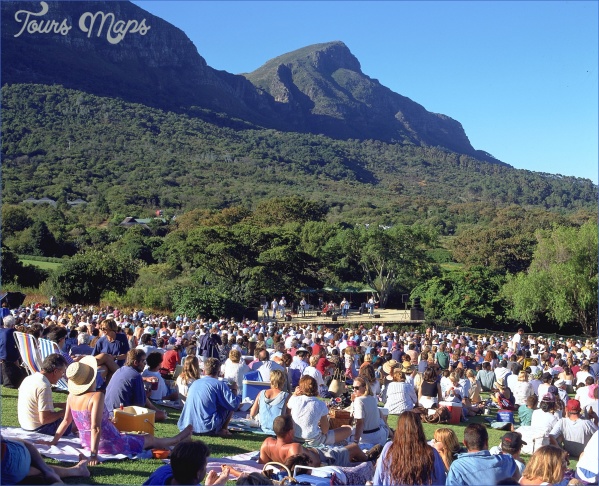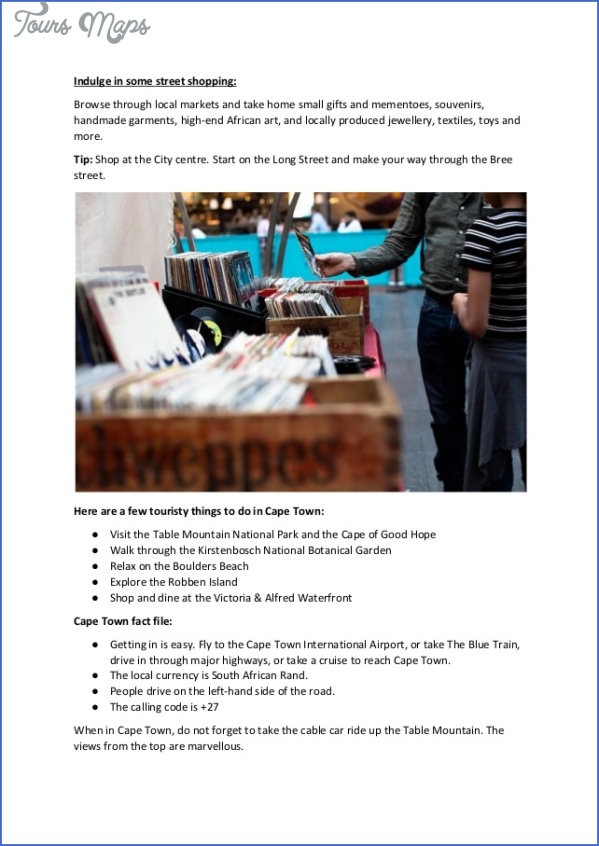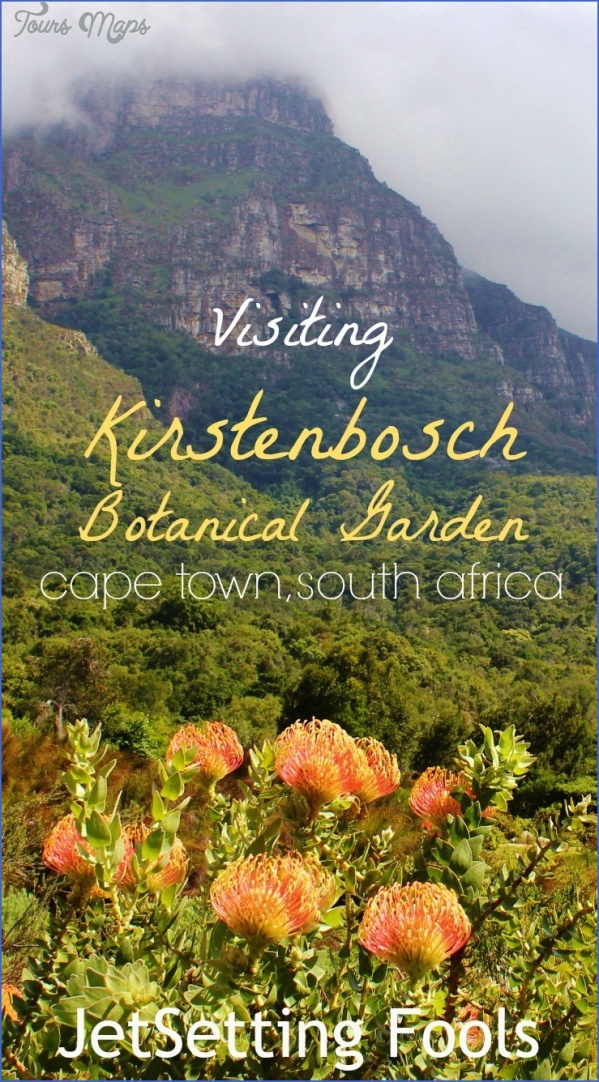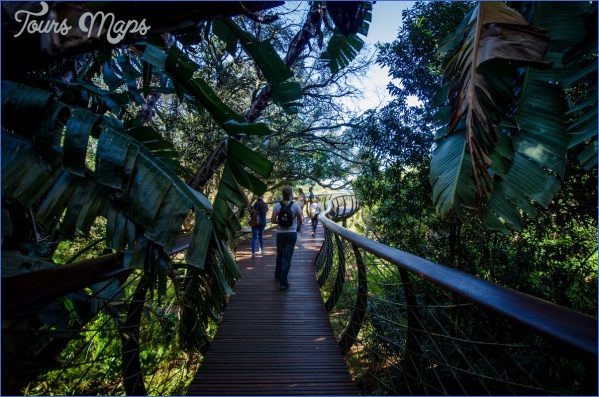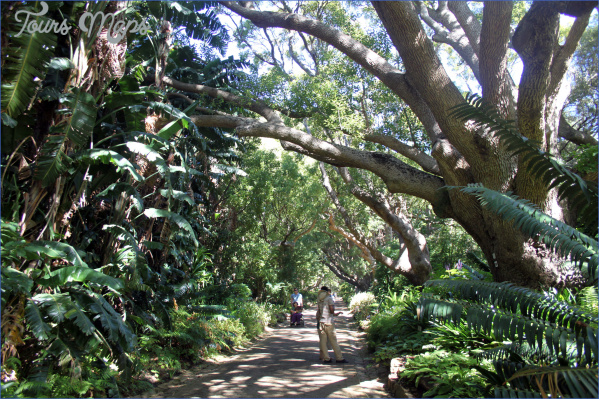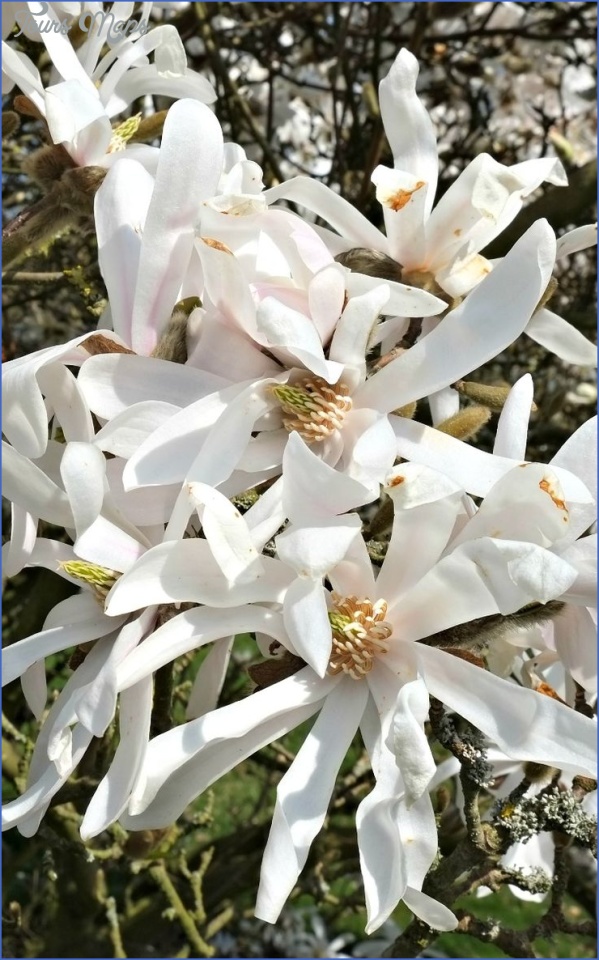Creating a haven for succulents Mass displays of mesems (locally known as ‘vygies ’) include purple Lampranthus amoenus in the foreground, with red Drosanthemum speciosum and yellow Drosanthemum bicolor higher up the slope. South Africa, at last count, had some 4 000 species of succulent plants – about 40 per cent of the global total. They range in size from the tiny stone plants of the Knersvlakte along the west coast to the giant baobabs of the bushveld. Usually found in hot, arid climates, succulents store water in their leaves, stems or roots to tide them over extended dry periods. They have one feature in common: a dislike of too much rain. Kirstenbosch is very wet by comparison with the habitats of most succulents, particularly in winter. The Garden’s first Curator, Joseph Mathews, used innovation and a careful choice of species to present a grand display of South African succulents in the rock garden that commemorates his work. By transporting many tonnes of huge sandstone and granite boulders and wagonloads of gravels to a well-drained, sunny slope, he created an environment in which an impressive collection of large tree euphorbias, aloes, sansevierias, portulacarias, mesembryanthemums and other succulents could thrive, despite the Garden’s high rainfall. The Mathews Rockery has served the Garden and its visitors well for nearly a century, but can accommodate only a limited range of species. What the Garden needed was a large, airy, dry and warm conservatory, in which a representative collection of the country’s succulents could be displayed. This need became a major, almost obsessive fund-raising project for the Botanical Society, and focused the energies and passions of the Kirstenbosch branch of the society from the late 1980s until the Conservatory was opened in 1997. Today the succulent collection exceeds 700 species – including specimens from the Mesembryanthemaceae, Crassulaceae, Euphorbiaceae, Apocynaceae, Portulacaceae, Aloaceae and Vitaceae families. While most succulent species at Kirstenbosch are now found in the Conservatory, mass displays of mesems in bloom line the main walkway into the Garden, while visitors are treated to the exuberant flowering of aloes in the Mathews Rockery through winter.
The Conservatory’s centrepiece, a large Baobab Tree, was collected in the Limpopo valley and transported 2 000 kilometres from the far north of South Africa to Kirstenbosch Garden at its southwestern tip.
To meet the need for a ‘desert house’, Cape Town architect Julian Elliot designed an innovative, elegant and efficiently cross-ventilated building of 3 000 square metres, sufficient to house a baobab as its centrepiece and a vast collection of succulents. Horticulturist-cum-naturalist Ernst van Jaarsveld criss-crossed South Africa, collecting not only carefully documented plant specimens, but also the rocks and soils of the full range of substrates that the country’s succulents need for growth. The resulting conservatory is both a botanical and geological museum, and more. Mindful of the fact that South Africa’s succulents occur in both western, winter-rainfall and eastern, summer-rainfall zones, the Conservatory’s mini-ecosystems are oriented by longitude and latitude according to the geographic distribution of the species displayed. Careful watering by hand ensures that both the amount and seasonality of irrigation is appropriate to the eco-region represented. So successful is the creation of differing zones that visitors in summer might wonder why half the display (from the winter-rainfall region) looks dormant, while the other (from the eastern, summer-rainfall region) is lush and in full flower.
Plan A Trip To Kirstenbosch National Botanical Garden Photo Gallery
In addition to the focus on arid-zone succulents, the Conservatory has four specialist collections housed in the four corners of the Conservatory: moist forest ferns, clivias and streptocarpus provide the luxuriant show familiar in greenhouses; a second collection displays a seasonal parade of spectacular bulbs; a third is devoted to the tiny lithops (or stone plants) of the Knersvlakte; and the fourth collection, recently established, showcases the unique Welwitschia mirabilis of the Namib Desert of Namibia and Angola. Welwitschia seeds have successfully been germinated and grown at Kirstenbosch for many years. The trick, it has been discovered, is to treat the seedlings, which are extremely vulnerable to fungal infection, with an inoculant that forms a symbiotic association with the roots of welwitschia, preventing attack by other fungi. The favourite plant of the Garden’s founder, Harold Pearson, is now being given centre stage.
Maintaining such a diversity of species in semi-artificial conditions requires special skills. To avoid the use of chemical insecticides in the Conservatory, biological controls have been introduced. Gecko shelters were built for the thick-toed gecko Pachydactylus bibronii, which feeds on moths, thus reducing caterpillar damage. Predatory mites Ableseius californicus were introduced to control red spider mites; the parasitic wasp Encarsia formosa to control white fly; and ladybirds to control aphids. Even slug-eating snakes Duberria lutrix help by feeding on snails. Sunbirds pollinate the aloes, and Karoo Prinias assist in insect control. Geology, climate, botany and ecology meet in a single space.
Looking beyond fynbos The majestic national flower, the King Protea Protea cynaroides is always a favourite among visitors. As the first ‘national’ garden in South Africa, Kirstenbosch has, from its founding years, attempted to display as many as possible of the country’s 20 456 indigenous fern and flowering plant species. We have seen that climatic limitations have not defeated the horticulturists’ skills – but space has been a challenge. Today the Garden’s living collections include over 6 000 species. The key fynbos families have been given special attention, but so, too, have other families that are more widely distributed in South Africa.
Pearson’s passion for cycads received early expression in the collection he established at the Garden’s focal point: probably the world’s most comprehensive collection of the genus Encephalartos, it represents all South African species. Careful hand-pollination ensures a good crop of seeds, regularly distributed to other gardens around the world. Studies on the genetic diversity within the living collection of some rare cycad species growing at Kirstenbosch have shown that a richer gene bank is held in the Kirstenbosch collection than that of the few remaining populations surviving in the wild. As naturally occurring populations go extinct, Kirstenbosch offers an ultimate gene bank to save these ‘living fossils’.
Maybe You Like Them Too
- Top 10 Islands You Can Buy
- Top 10 Underrated Asian Cities 2023
- Top 10 Reasons Upsizing Will Be a Huge Travel Trend
- Top 10 Scuba Diving Destinations
- World’s 10 Best Places To Visit


